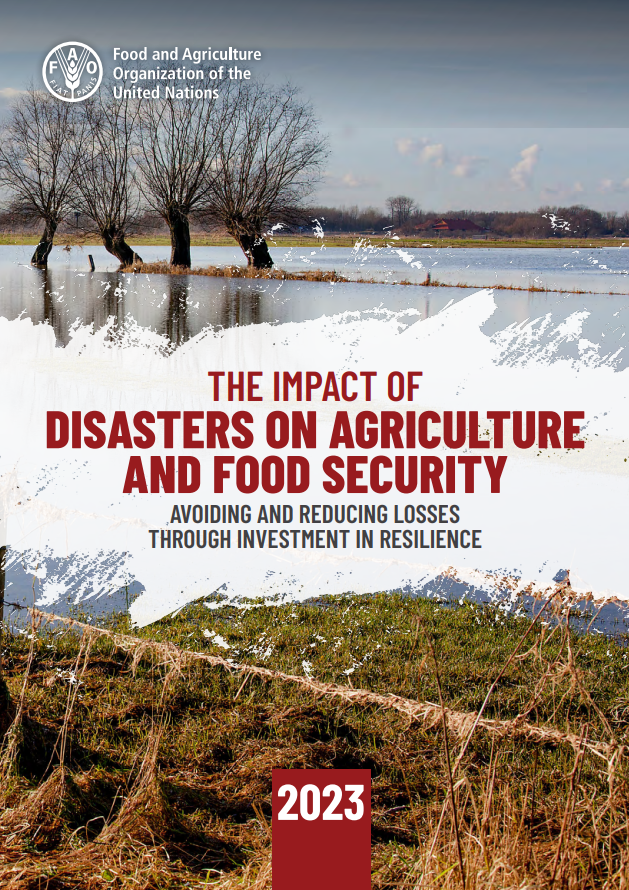 Indicator 1.5.2 - Direct economic loss attributed to disasters in relation to global gross domestic product (GDP)
Indicator 1.5.2 - Direct economic loss attributed to disasters in relation to global gross domestic product (GDP)
This indicator measures the ratio of direct economic loss attributed to disasters in relation to global gross domestic product (GDP).
Custodian agency: United Nations Office for Disaster Risk Reduction (UNDRR)
Contributing agency: FAO
Target 1.5
By 2030, build the resilience of the poor and those in vulnerable situations and reduce their exposure and vulnerability to climate-related extreme events and other economic, social and environmental shocks and disasters.
Direct economic loss attributed to disasters in relation to global gross domestic product (GDP)
Impact
Agricultural losses consistently constitute a significant proportion of total economic losses over the years, regardless of the value of total losses incurred, as evidenced by data from countries which report both types of losses. The significance of this share underscores agriculture’s importance for the economic development of many countries across the globe, its innate interactions with the environment and its direct reliance on natural resources. Urgent and ambitious action is needed to build more resilient agricultural systems, which are currently bearing the brunt of economic losses due to disasters.
Key results
Vulnerable populations, including smallholder and subsistence farmers, pastoralists, fisherfolk and wage labourers, bear the brunt of increasingly frequent disasters and the resulting economic losses.
Data from 22 countries on both direct economic losses attributed to disasters and losses in the agricultural sector is available for 2021. During this year, agricultural losses constituted USD 19.6 billion of the total direct economic losses, amounting to USD 113 billion in these countries. Wide variations exist in disaster loss data across time and regions, as they are greatly influenced by large-scale catastrophic events. Furthermore, the number of countries that report data on both economic and agricultural losses from disasters varies significantly across the years, and may be one factor affecting the values of the losses reported overall. These data gaps on the impact of natural hazards and disasters, especially in developing countries, must be addressed to inform appropriate risk reduction policies and investments that build the resilience of the agricultural sector.
Highlights
Capacity development
15/ 9
2023
Launch of the "Tracking progress on food and agriculture-related SDG indicators 2023" report
Hybrid Event, 15/09/2023
The FAO Liaison Office in Geneva and FAO Office of Chief Statistician (OCS) launched the "Tracking progress on food and agriculture-related SDG indicators 2023" report in Geneva.
4/ 5
2023
[FAO x UNSD Brown Bag webinar] A Shiny Application to Track the Progress on Food and Agriculture-related SDG Indicators
Virtual Event, 04/05/2023
FAO has recently launched the FAO SDG Progress Assessment App: a web-based tool designed to automatize the assessment of progress made at the national, regional, and global level towards the achievement of the SDGs. The developed tool allows measuring the cu...
19/ 9
2022
Report's launch: "Tracking progress on food and agriculture-related SDG indicators 2022"
Hybrid Event, 19/09/2022
Seven years into the 2030 Agenda, there is an urgent need to understand where the world stands in eliminating hunger and food insecurity, as well as in ensuring sustainable agriculture. FAO's new report, “Tracking progress on food and agriculture-related SDG indicators”, offers analysis and trends on indicators across eight SDGs (1, 2, 5, 6, 10, 12, 14 and 15), highlighting areas o...


